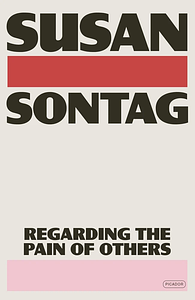You need to sign in or sign up before continuing.
Take a photo of a barcode or cover
goddamn, susan
Indeed, there is no Museum of the History of Slavery—the whole story, starting with the slave trade in Africa itself, not just selected parts, such as the Underground Railroad—anywhere in the United States. This, it seems, is a memory judged too dangerous to social stability to activate and to create. The Holocaust Memorial Museum and the future Armenian Genocide Museum and Memorial are about what didn't happen in America, so the memory-work doesn't risk arousing an embittered domestic population against authority. To have a museum chronicling the great crime that was African slavery in the United States of America would be to acknowledge that the evil was here. Americans prefer to picture the evil that was there, and from which the United States—a unique nation, one without any certifiably wicked leaders throughout its entire history—is exempt. That this country, like every other country, has its tragic past does not sit well with the founding, and still all-powerful, belief in American exceptionalism. The national consensus on American history as a history of progress is a new setting for distressing photographs that focuses our attention on wrongs, both here and else one where, for which America sees itself as the solution or cure.
dark
informative
sad
medium-paced
challenging
dark
emotional
informative
reflective
sad
tense
fast-paced
So far as we feel sympathy, we feel we are not accomplices to what caused the suffering. Our sympathy proclaims our innocence as well as our impotence. To that extent, it can be (for all our good intentions) an impertinent - if not an inappropriate - response. To set aside the sympathy we extend to others beset by war and murderous politics for a reflection on how our privileges are located on the same map as their suffering, and may - in ways we might prefer not to imagine - be linked to their suffering, as the wealth of some may imply the destitution of others, is a task for which the painful, stirring images supply only an initial spark.
dark
informative
tense
medium-paced
«la índole destructiva de la guerra —salvo la destrucción total, que no es guerra sino suicidio— no es en sí misma un argumento en contra de la acción bélica a menos que se crea (y en efecto pocas personas lo creen en verdad) que la violencia siempre es injustificable, que la fuerza está mal siempre y en toda circunstancia; mal porque, como afirma Simone Weil en un ensayo sublime sobre la guerra, la «Ilíada» o el poema de la fuerza (1940), la violencia convierte en cosa a quien está sujeto a ella.»
nunca había leído nada de sontag y admito que fue porque me sentía muy ajena a todo su mundo pero este ensayo te hace cambiar de opinión. el puente que encuentra entre los conflictos – el dolor – la fotografía es buenísimo. para nada una lectura corta aunque tenga cien páginas, el contenido te deja con ganas de llorar y con re pocas esperanzas en la humanidad pero vale toda la pena
nunca había leído nada de sontag y admito que fue porque me sentía muy ajena a todo su mundo pero este ensayo te hace cambiar de opinión. el puente que encuentra entre los conflictos – el dolor – la fotografía es buenísimo. para nada una lectura corta aunque tenga cien páginas, el contenido te deja con ganas de llorar y con re pocas esperanzas en la humanidad pero vale toda la pena
Susan Sontag’s final book-length essay is an unflinching examination of how we consume images of suffering. This book dissects the ways war photography shapes our understanding of violence, morality, and responsibility.
Sontag writes with a razor-sharp, occasionally frightening precision. She forbids convenient ethical superiority or simple conclusions. Rather, she challenges the reader to consider if visual exposure to atrocities genuinely increases empathy or if it eventually numbs us. In an age of constant media saturation, her perspective is remarkably significant despite being highly historical, spanning from the Crimean War to Abu Ghraib.
This book's refusal to provide easy solutions is what makes it so captivating—and tiresome at times. Does observing suffering make a difference? Can the complete truth of battle ever be captured in a photograph? What does that imply about our interaction with it, if not? Sontag has us sit with these issues rather than providing answers, which is exactly why this book stays with us for a long time.
It’s not a comforting read, but it’s an essential one.
(Note: You could start with “On Photograph” first, I just happened to have this book at hand and gave it a go.)
Sontag writes with a razor-sharp, occasionally frightening precision. She forbids convenient ethical superiority or simple conclusions. Rather, she challenges the reader to consider if visual exposure to atrocities genuinely increases empathy or if it eventually numbs us. In an age of constant media saturation, her perspective is remarkably significant despite being highly historical, spanning from the Crimean War to Abu Ghraib.
This book's refusal to provide easy solutions is what makes it so captivating—and tiresome at times. Does observing suffering make a difference? Can the complete truth of battle ever be captured in a photograph? What does that imply about our interaction with it, if not? Sontag has us sit with these issues rather than providing answers, which is exactly why this book stays with us for a long time.
It’s not a comforting read, but it’s an essential one.
(Note: You could start with “On Photograph” first, I just happened to have this book at hand and gave it a go.)
reflective
medium-paced



